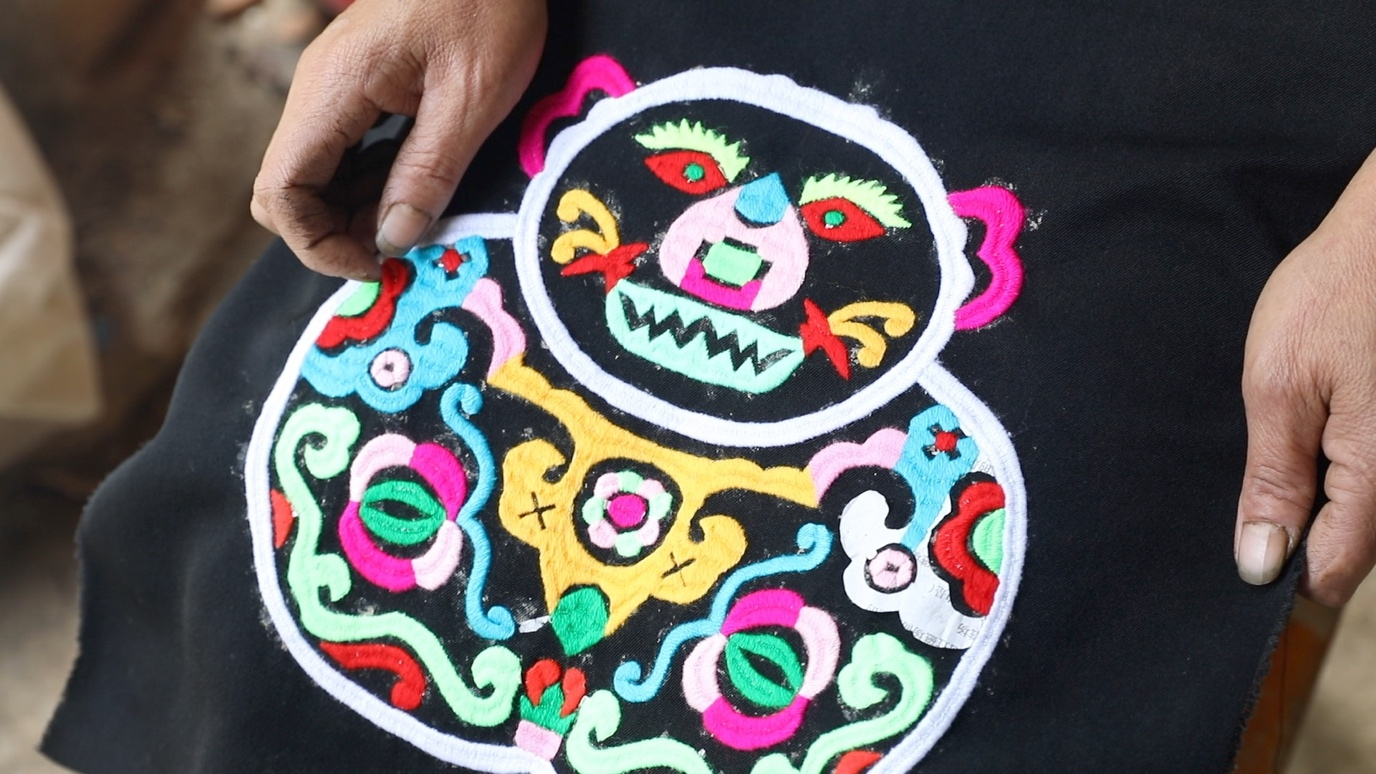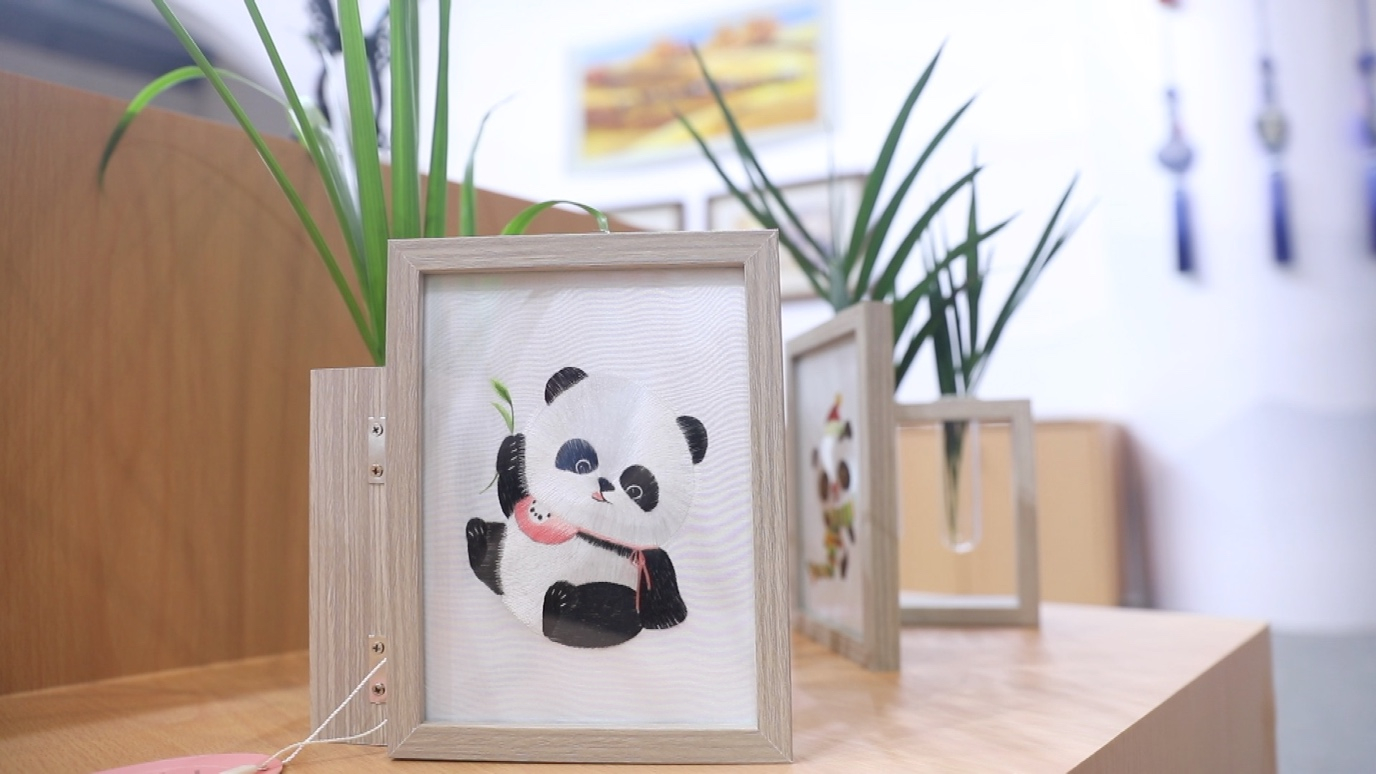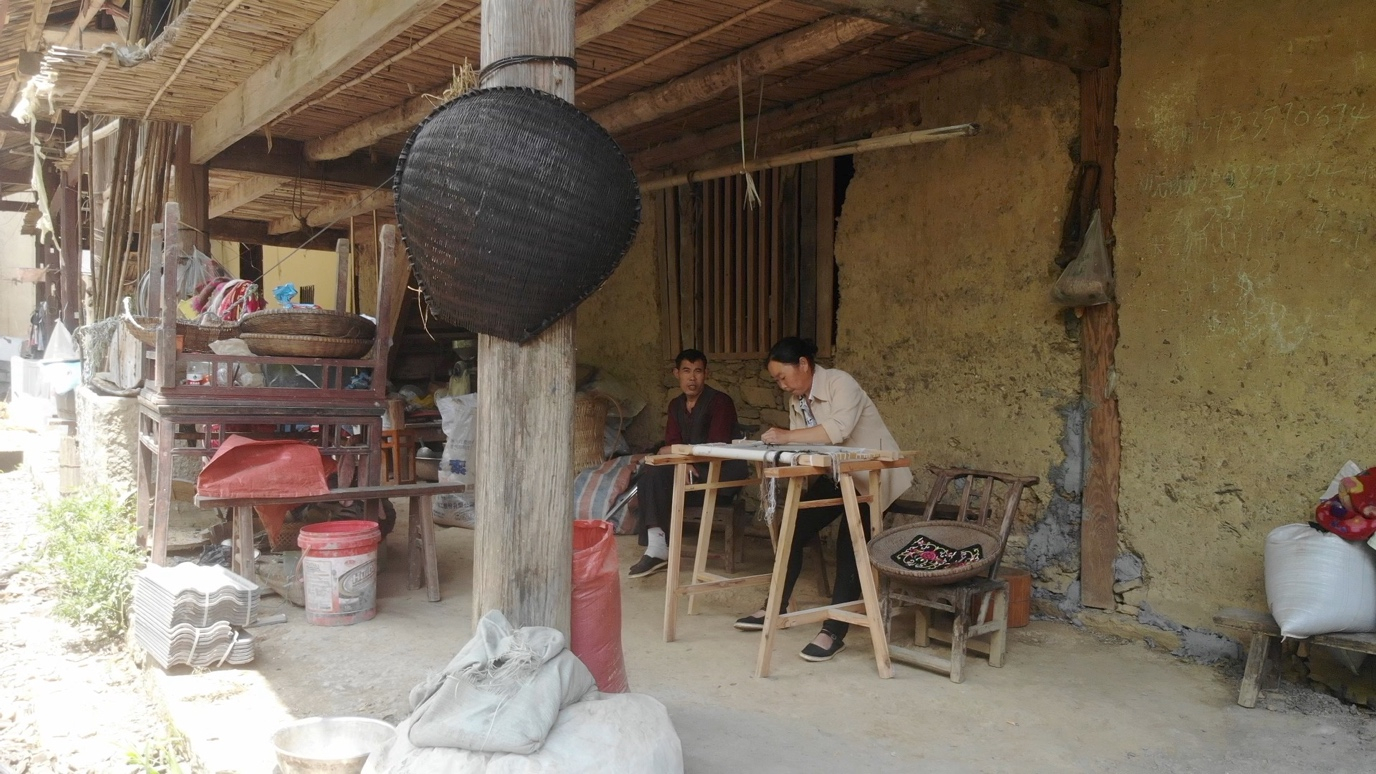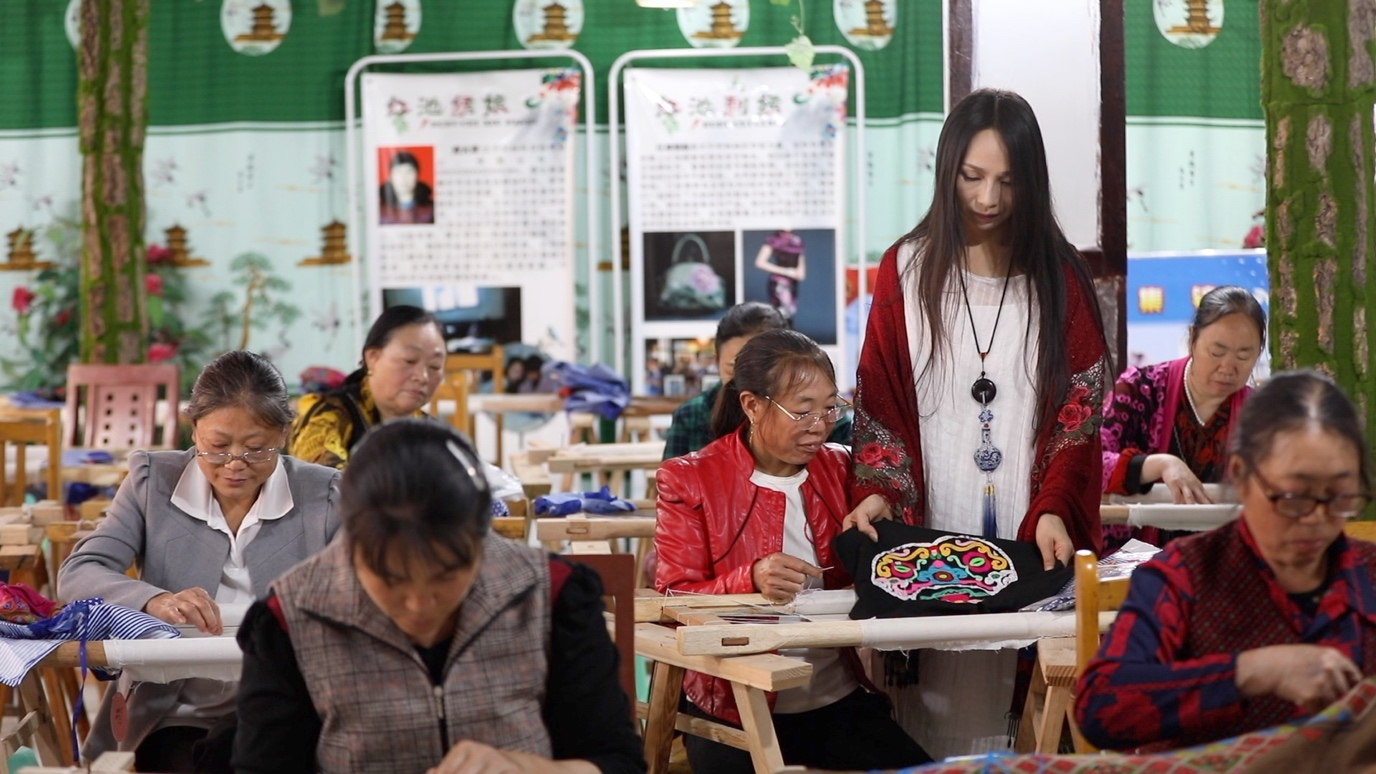

In Wuxi County of southwest China’s Chongqing Municipality, locals have revived an ancient embroidery skill to help alleviate poverty. The unique handicraft, named after the river that runs through the county, is known as Daning River Embroidery. In 2011, it was added to the list of Chongqing’s intangible cultural heritage.
Tang Lijuan is an inheritor of this ancient craft and now runs a business selling embroidery products. Before 2013, she worked at a village primary school and taught Chinese language for 19 years.
Talking about why she quit her job for a business, Tang told CGTN that back in her childhood, she was mesmerized by the colorful patterns and designs of local embroidery, believed to be part of the local witchcraft culture in the county.
When she worked as a teacher, she found that there were many children whose parents had gone to other cities for work. “So, I wondered, if I employed the parents, they would be able to come back, take care of their children and help me with the embroidery work,” Tang said.

An embroidery depicting a panda. /CGTN Photo
200 new jobs
Since it was founded, Tang's embroidery business has benefited more than 200 local families. Over 70 percent of them used to live below the national poverty line, an annual per capita income of 3,535 yuan, around 500 U.S. dollars, in 2018.
Zhang Maoxiang, 46, lives in mountainous Yushu Township of Wuxi, is one of the women who used to live below the poverty line. Twelve years ago, her husband was diagnosed with pneumoconiosis, or black lung disease, caused by long-term exposure to coal dust, and lost his job in a mine in northern China.
Zhang told CGTN that life was tough, especially for raising her three children. She said, "The greatest difficulty was sending my children to school. My family could not afford it."

Zhang Maoxiang is embroidering at home. The adobe house behind her has been used for generations. It was renovated by the local government in this June, with walls reinforced and new tiles installed. /CGTN Photo.
Three meals a day
In September 2018, Tang Lijuan offered Zhang a training program on embroidery and then signed her up as a contract worker. Since then, Zhang has been receiving a regular monthly income of 1,700 yuan, about 250 U.S. dollars. Along with government subsidies, that’s enough to lift the family out of poverty.
Zhang said her life and that of her children had obviously been improving. Her children used to be embarrassed to go to school because of their disadvantaged family background and could only afford to eat two, instead of three meals a day. Zhang hopes she can stay on the program for a longer time so her children will be hopeful about life, and complete their education.
Zero poverty by 2020
For much of its history, Wuxi County has remained isolated and underdeveloped. Official data shows there are still more than 4,300 families living in poverty, with a poverty occurrence rate of 3.25 percent. Despite being one of the nearly 600 most impoverished counties in China, it has pledged to eradicate absolute poverty by the end of this year.
As part of its efforts to reduce poverty, local departments have prioritized tourism and cultural industries to boost local income. And the embroidery project, best known for its flexibility, has proved to be among the most effective of these measures.

A workshop in Hongchiba Town, Wuxi County. /CGTN Photo
A source of welfare
To offer jobs for more poverty-stricken families, Tang Lijuan has set up three embroidery workshops across the county, turning the art of embroidery into sustainable products for modern taste.
In 2018, the handicraft brought in turnover of 8.3 million yuan, about 1.2 million U.S. dollars, an increase of over 60 percent compared to the previous year. Tang said, as the business expands, more job opportunities will be offered, and the ancient embroidery skill will continue to serve as a sustainable source of public welfare.

Copyright © 2018 CGTN. Beijing ICP prepared NO.16065310-3
Copyright © 2018 CGTN. Beijing ICP prepared NO.16065310-3